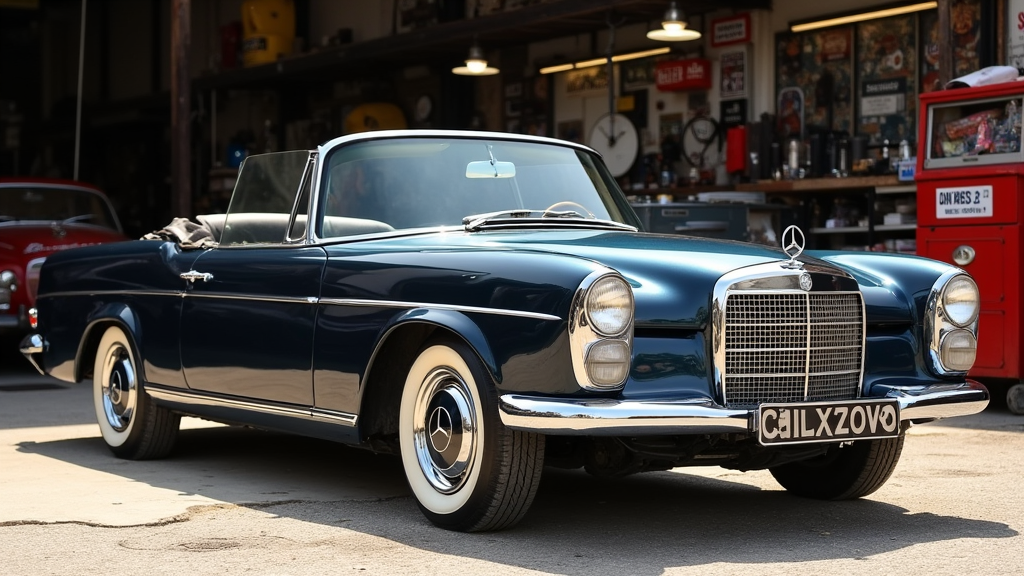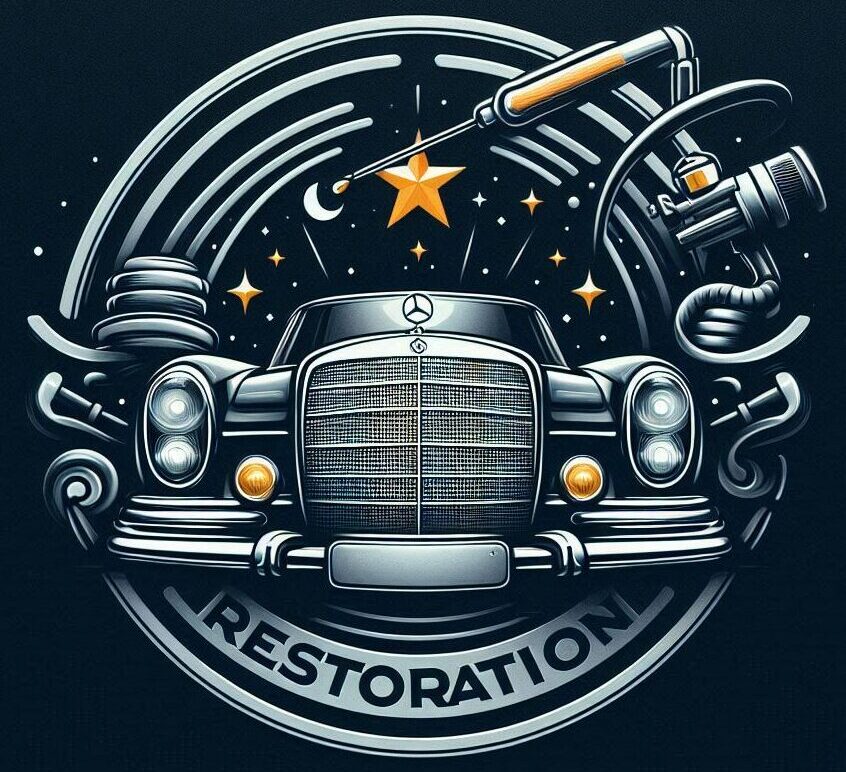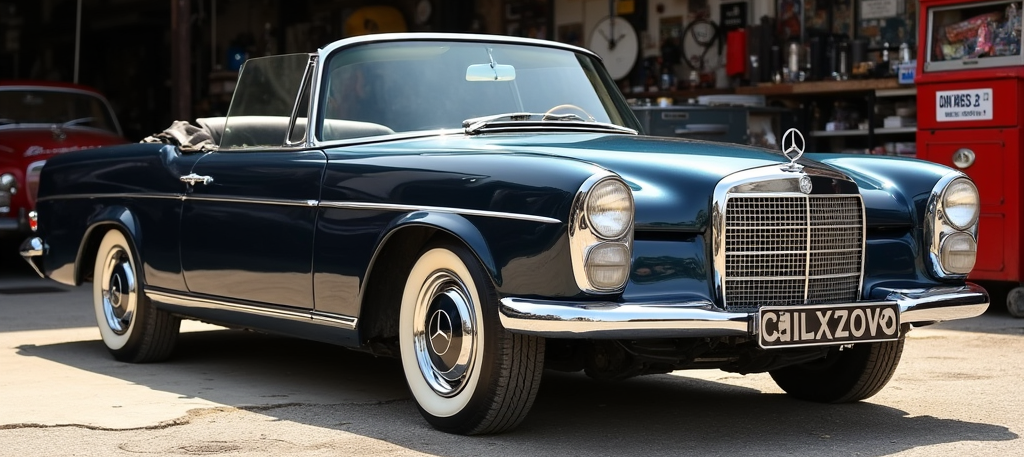
Restoring a classic Mercedes is a pretty rewarding experience, whether you’re after originality, timeless style, or just love getting your hands dirty with a bit of old-school engineering. These cars have a reputation for build quality and elegance, and, honestly, they stand the test of time both in value and curb appeal. Still, not every classic Benz is the same when it comes to a restoration project. Some are straightforward weekend warriors, while others are ambitious adventures that need loads of patience and care.
If you’re thinking about getting into Mercedes restoration, or you’re just curious about what makes these vintage models so special, there are a few standouts that always come up. Some bring memories of luxury and innovation, others deliver iconic motorsport vibes, and a few are just plain fun to drive. Here’s my take on the most popular classic Mercedes models that turn restoration into a true adventure—and sometimes a bit of an obsession.
1. Mercedes-Benz W113 “Pagoda” (1963–1971)
The W113, which fans call the “Pagoda” because of its slight concave hardtop, is a favorite among Mercedes lovers. This SL roadster hits a sweet spot between oldschool cool and modern driver comfort. Models like the 230SL, 250SL, and 280SL are all part of this family, and each one brings its own quirks and charm.
Why Restorers Love the W113
- Timeless styling with a sporty vibe.
- Parts and knowledge are surprisingly easy to find because of its popularity.
- Solid mechanicals. These were built to last!
When I talk to other classic car fans, the Pagoda pops up a lot because you get a bit of everything: style, drivable power, and excellent value retention. The cost of entry isn’t exactly low, but the overall experience and sense of achievement are hard to beat.
2. Mercedes-Benz W123 Series (1976–1985)
The W123 is the definition of German engineering that just won’t quit. These sedans, coupes, and wagons were once all over the place, used as everything from family cars to taxis. Now, they’re prized for their mechanical simplicity and easygoing nature.
Popular Models for Restoration
- 300D – Legendary diesel reliability.
- 230E – Solid gasoline option.
- 280CE – The coupe for a bit more flair.
W123s aren’t tricky to restore for most DIYers, since the mechanics are straightforward and parts are all over the market. The real challenge is finding solid bodies, since rust loves to hide in floorboards and sills, but if you score a good shell, bringing one back to life is extremely satisfying.
3. Mercedes-Benz R107 SL (1971–1989)
The R107 took the SL badge into a new era, sporting more comfort and safety features than any SL before. That’s why you’ll see these cars in so many movies and TV shows from the 1970s and ’80s. Both the V8 and sixcylinder versions have their fans, and there are plenty of import versions with unique quirks.
Things to Look Out For
- Electrical gremlins; their systems are a step up from older models, so careful checks help a lot.
- Timing chain and subframe issues, mostly with higher-mileage examples.
- Hard to find trim, especially on European imports.
A wellsorted R107 SL turns heads and delivers a comfortable, open top cruiser vibe. It’s one of the easier classic convertibles to live with, plus there’s plenty of support online and in local clubs.
4. Mercedes-Benz W111/W112 “Fintail” (1959–1971)
People call these cars “Fintails” because of their playful fins at the rear. The W111 and W112 range includes sedans, coupes, and cabriolets, all with that distinctive late-1950s style. These models marked a big leap in safety and ride comfort for Mercedes, and they come in all sorts of engine sizes.
Main Appeal
- Unique styling that stands out in any classic car crowd.
- Smooth ride thanks to advanced suspension for the era.
- Lots of chrome, making it a detailoriented restorer’s dream (or nightmare, depending on your patience).
Fintails are a little rarer at car shows, and restoring one takes a bit of hunting for trim and interior bits, but the end result is super impressive. A nicely finished Fintail sedan, coupe, or cabriolet grabs attention and acts as a rolling piece of history.
5. Mercedes-Benz 190SL (W121) (1955–1963)
The 190SL is kind of like the baby brother to the mighty 300SL, sharing a lot of the same design DNA but at a much more accessible price point, both to buy and to restore. These lightweight roadsters are easy to live with, offering solid build quality and simple mechanics. Purists love them for the original 1.9-liter fourcylinder engine and classic, understated style.
Restoration Tips for the 190SL
- Watch for rust in the floor and rocker panels.
- Original interiors are tricky to source, so budget for new old stock or highquality reproduction parts.
- Get familiar with the Solex carburetors; tuning them just right takes practice.
The 190SL is growing in value, so restoration costs often return through resale or just the satisfaction of owning something special that brings a smile every time you open the garage door.
6. Mercedes-Benz 300SL Gullwing and Roadster (W198) (1954–1963)
For a lot of enthusiasts, the 300SL Gullwing is the high mark for Mercedes design, and the roadster version is just as legendary. If you’re lucky enough to take on one of these, you’re in rare company. From the famous upwardopening doors to racinginspired engineering, these models are the dream restoration project for plenty of collectors.
Challenges Restoring the 300SL
- Extremely expensive to buy and restore. A project for big budgets.
- Hardsource original body and engine parts.
- Requires specialist knowledge or professional help for originality and safety reasons.
Owners who see one of these through to completion end up with a truly extraordinary car that sits among the world’s great automotive icons. For everyone else, just seeing one on the road or at a show is enough to spark inspiration.
7. Mercedes-Benz W108/W109 Series (1965–1972)
The W108 and W109 series are fullsize luxury sedans known for refined ride quality and solid construction. The main difference between the two is that the W109 runs air suspension and often comes with more high-end trim, while the W108 sticks with traditional steel springs. Popular engines include the 250S, 280S, 280SE, and even the V8powered 300SEL 6.3.
Why They’re Fun to Restore
- Plenty of space in the engine bay and in the interior, so they’re decent for those learning basic restoration skills.
- Body parts and trim are still available with some digging.
- The 6.3 model is always a talking point at car events.
These are valueformoney restorations, and if you find a good project car, cleaning it up gives you a rolling piece of Mercedes luxury history with lots of street presence.
8. Mercedes-Benz 500E/W124 (1991–1994)
Even though ’90s cars are just starting to catch on with restorers, the Mercedes 500E is already a legend. Codeveloped with Porsche, it features a handbuilt V8 and subtle widebody styling. The W124 chassis underneath is famous for reliability, and the performance mix makes it one of the best sleeper sedans out there.
Restoration Highlights
- Special suspension and body parts. Expect to wait for the right components.
- Modern electronics that sometimes need skilled diagnosis and repair.
- A cult following with tons of online forums for advice, troubleshooting, and parts sourcing.
This is the kind of Mercedes that flies under the radar until the engine fires up. Proper restoration delivers a car that’s equally at home on the show field or tearing up your favorite backroad.
What Makes a Classic Mercedes a Good Restoration Project?
When I look at what makes certain Mercedes models more popular for restoration than others, a few things stand out. First, availability of parts is pretty important. Some cars get attention simply because there’s lots of aftermarket and reproduction support, so even hardtofind bits can be sourced. Then, there’s the challenge of rust. Older Mercedes bodies held up better than some rivals, but you still want to inspect for weak spots and plan repairs early on.
Rarity plays a part, too. Unique options, rare builds, or just lesscommon color combinations can add value and satisfaction. Personal taste factors in. Some folks are after concourslevel accuracy, while others love the idea of a tasteful restomod that balances classic looks with modern upgrades.
Tips for Getting Started on Your Own Mercedes Restoration
- Set a realistic budget. Classic Mercedes can have surprises, so it helps to plan for unexpected expenses.
- Join a community. There are active clubs and online groups for nearly every model, and these are treasure troves for advice, troubleshooting, and bargains. You can stumble upon rare parts or get honest feedback on your restoration plans from experienced peers.
- Start with a solid base. Buying a car with a straight body and minimal rust saves a lot of headaches.
- Don’t rush the process. Take time to savor each stage. It’s more about enjoying the adventure and learning as you go.
- Invest in manuals and documentation. Original service manuals, wiring diagrams, and period brochures not only make repairs easier but give you a stronger sense of connection to your project’s history.
- Work with professionals when needed. For complicated paint, upholstery, or mechanical jobs, teaming up with specialists can bring nextlevel cool results and keep your restoration on track.
- Keep detailed records. Document every repair, part replaced, and update. This not only helps track your progress but adds value if you ever sell the car.
Restoring a classic Mercedes connects you with decades of automotive innovation and elegance. With so many options and plenty of help out there, it’s a hobby that delivers plenty of satisfaction, whether you finish with a showpiece or a well-loved weekend cruiser. Bottom line: Getting into Mercedes restoration can take your passion for cars up a notch and let you bring automotive history back to life, one project at a time.

